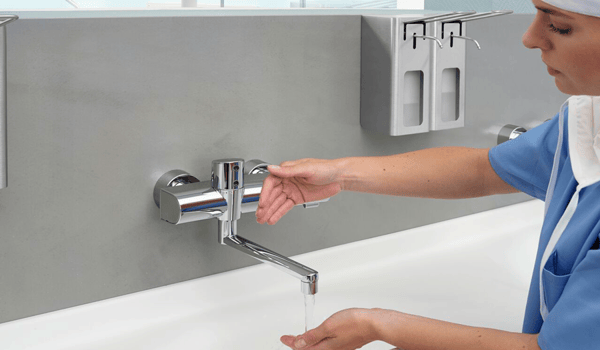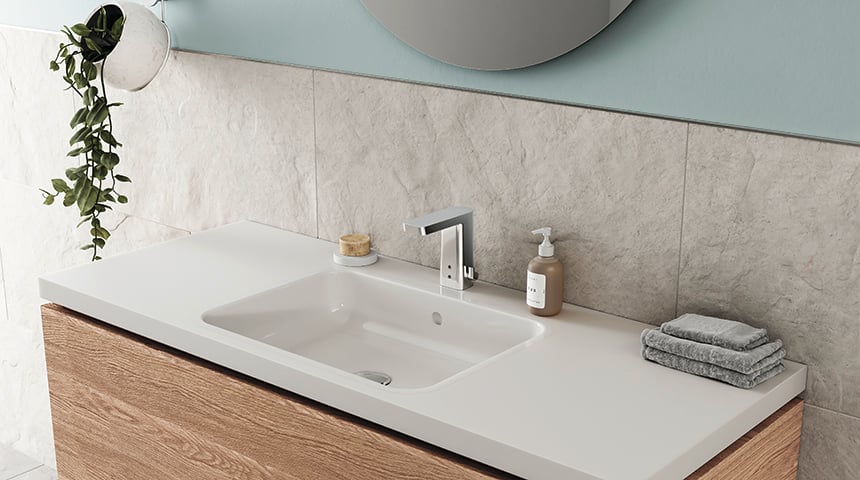After experiencing the hardships of operating under a pandemic, how are planners working to ensure present and future hospitals are pandemic proof?

For decades, hospitals and healthcare facilities across the globe have been fighting the battle against hospital acquired infections (HAIs), which were putting both staff and patients at risk.
In the Covid-19 era, however, this battle has advanced in ways that has everyone in healthcare on the front lines. From hospital administrators and facility managers to planners and architects, these professionals are considering what renovations they can make today to improve safety for patients and staff, what behaviour to best promote and, all in all, what the future pandemic-proof hospital will look like.
“All we know is that there will be change,” says Suzanne MacCormick, global healthcare lead at American building consultancy WSP. “One of the many lessons of this crisis is that flexibility of space is paramount to enable optimum resilience and provide readiness for the unknown.”
We’ve gathered insights from a few design and planning experts around the world to help determine some common answers to these complex questions. Here’s a synopsis of what we found.

1. Flexible wards and waiting rooms
Architects believe that improved flexibility will keep hospitals ready for the unknown, where wards can adapt according to needs (such as a sudden rise in the number of patients requiring ICU treatment, for example).
In an article for Architectural Digest on how the pandemic will transform the built environment, engineer Craig Scully from India says, “You might see, from a design perspective, an ability to make a normal patient room more flexible to increase capacity or be easily converted into an ICU.”
Some are even discussing scrapping waiting rooms altogether to avoid the congregation of people to avoid possible infection, creating so-called ‘waiting nooks’ spread across the hospital.
“This lets patients be somewhere else in the building—the library or somewhere watching a lecture—instead of sitting around on the same floor with other ill people,” Lionel Ohayon from New York design studio ICRAVE tells Architectural Digest.
 Up to 80% of the most common diseases are transmitted by touch, which is why touchless faucets are becoming a standard in hospitals.
Up to 80% of the most common diseases are transmitted by touch, which is why touchless faucets are becoming a standard in hospitals.
2. The importance of hand hygiene explodes
Many of us are probably aware that WHO recommends ‘meticulous handwashing’ — which includes using the appropriate hand hygiene products and cleaning procedures, backed by adequate staff training. It is estimated that up to 80% of the most common diseases are transmitted by touch, directly from person-to-person or indirectly by touching the same surfaces.
Up to 80% of the most common diseases are transmitted by touch
For this reason, automatic hands-free devices, such as touchless washbasin faucets, are becoming a standard feature in patient rooms, public restrooms and ICUs alike.
Specifically, touchless faucets designed for healthcare facilities, built with corrosion-resistant brass and laminar water flow, make for ideal solutions to combat infectious diseases transmitted by touch. And built-in Bluetooth technology makes it easier to schedule regular automatic flushing, which can decrease the spread of microbes through stagnating water.
In 2013, a study published in the Canadian Journal of Microbiology shows that touchless faucets are more effective in promoting hand hygiene. Scientists found out that the presence of microbes on automatic faucets was substantially lower than on manual faucets.
3. Antimicrobial measures and materials take focus
Already in use in many hospital ICUs, copper surfaces can kill up to 100% of harmful microbes. It is well-known that copper and its alloys (brasses, bronzes, cupronickel) are able to keep a wide range of microorganisms at bay.
What’s more, many hospitals are also adapting laminar flow faucets, which are known to help reduce the spread of harmful microbes via aerosol spray.
Laminar flow means removing devices that break the water stream (including aerators) that can create breathable infectious droplets that spread in the air.
COVID-19 has profoundly impacted how hospitals are designed and operate. From how patients and loved ones are welcomed to how wards are built and arranged down to what type of faucets and materials are deployed.
Whether your project involves on-the-fly safety measures or you’re working on a new healthcare facility, pandemic proofing will be the name of the game well into the future.







 Up to 80% of the most common diseases are transmitted by touch, which is why touchless faucets are becoming a standard in hospitals.
Up to 80% of the most common diseases are transmitted by touch, which is why touchless faucets are becoming a standard in hospitals.